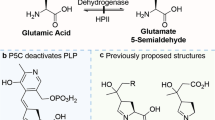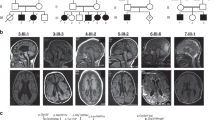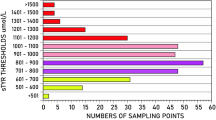Abstract
Summary: Enzymatic studies on the liver of an infant are described-a case of hypertyrosinemia without hepatic dysfunction. His parents were siblings and the mother had hypertyrosinemia. Excessive amounts of 4-hydroxyphenylpyruvic acid (pHPP), 4-hydroxyphenylacetic acid (pHPL), and 4-hydroxyphenylacetic acid (pHPA) were found to be excreted in the patient's urine as well as in the urine of the mother and the inhibitor of porphobilinogen synthetase was not found. Soluble tyrosine aminotransferase (s-TAT), separated from that of the mitochondrial form (m-TAT) by DE 52 column chromatography, was normal in the patient's liver, both quantitatively and qualitatively. The activities of fumarylacetoacetase in the patient's liver and in the peripheral leucocytes from the parents were normal. The activity of pHPP oxidase in the patient's liver was approximately 5% of the control and the enzyme had a high Km value for pHPP (controls: 0.06 ± 0.01 mM, patient: 0.23 ± 0.03 mM). From these results, the patient was thought to be different from previously described types of tyrosinemia and perhaps representative of a new variant form.
This is the first report concerning 4-hydroxyphenylpyruvic acid oxidase deficiency alone. Mild metal retardation and mild hypertyrosinemia may be offered as typical clinical features of the disease.
Similar content being viewed by others
Log in or create a free account to read this content
Gain free access to this article, as well as selected content from this journal and more on nature.com
or
Author information
Authors and Affiliations
Rights and permissions
About this article
Cite this article
Endo, F., Kitano, A., Uehara, I. et al. Four-Hydroxyphenylpyruvic Acid Oxidase Deficiency with Normal Fumarylacetoacetase: a New Variant Form of Hereditary Hypertyrosinemia. Pediatr Res 17, 92–96 (1983). https://doi.org/10.1203/00006450-198302000-00002
Issue date:
DOI: https://doi.org/10.1203/00006450-198302000-00002
This article is cited by
-
Clinical and molecular characterization of three patients with Hepatocerebral form of mitochondrial DNA depletion syndrome: a case series
BMC Medical Genetics (2019)
-
HPD degradation regulated by the TTC36-STK33-PELI1 signaling axis induces tyrosinemia and neurological damage
Nature Communications (2019)
-
The role of previously unmeasured organic acids in the pathogenesis of severe malaria
Critical Care (2015)
-
Molecular insight into the inhibition mechanism of plant and rat 4-hydroxyphenylpyruvate dioxygenase by molecular docking and DFT calculations
Medicinal Chemistry Research (2015)
-
Benign tyrosinaemia: an 18‐year follow‐up
Journal of Inherited Metabolic Disease (1995)



